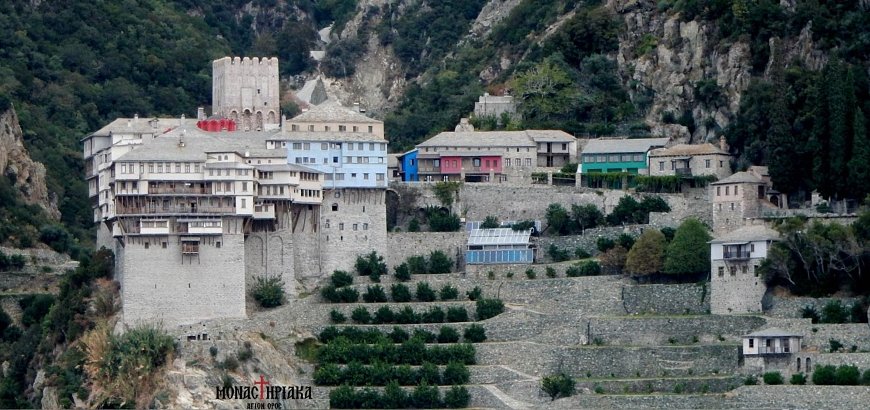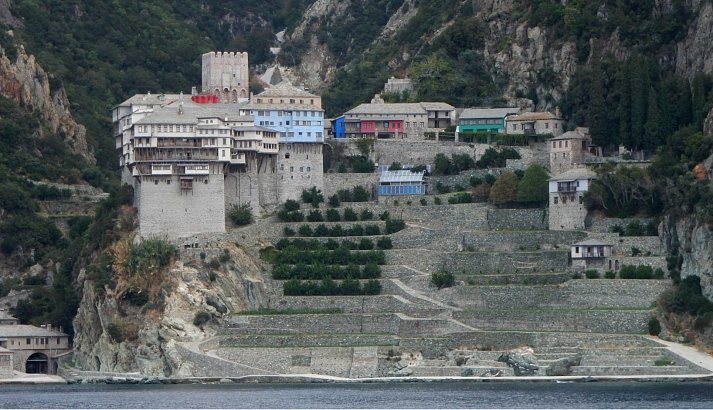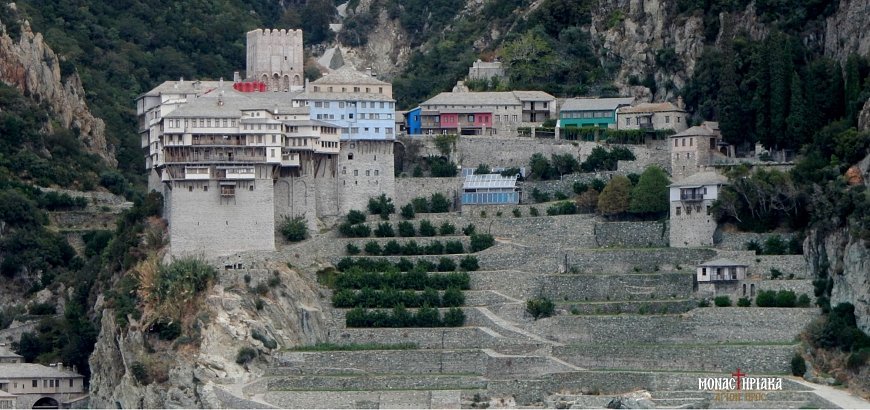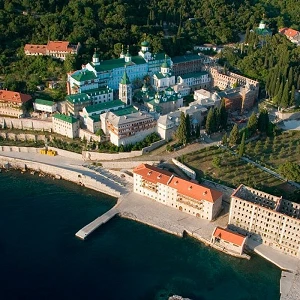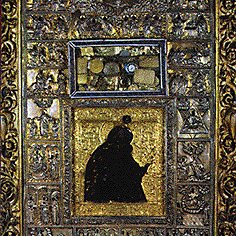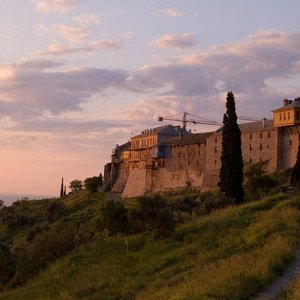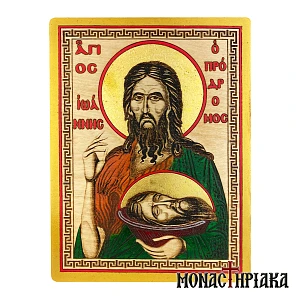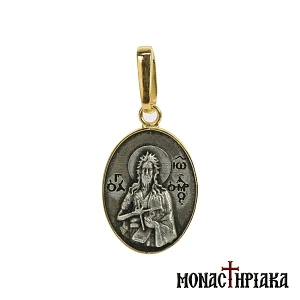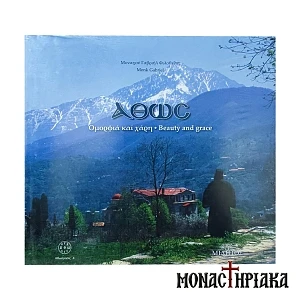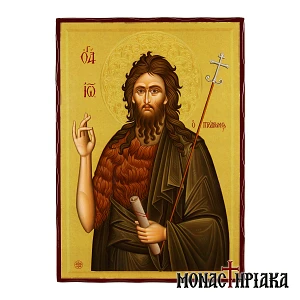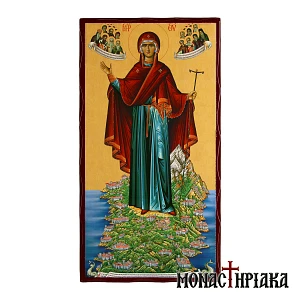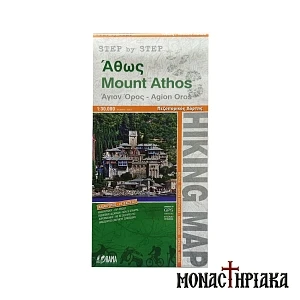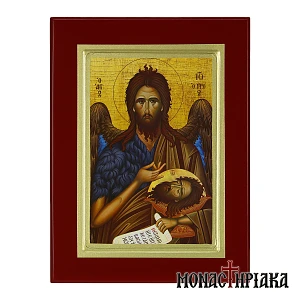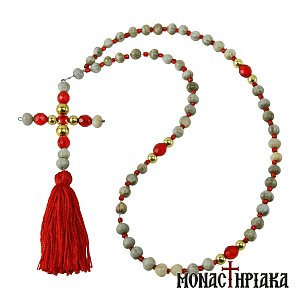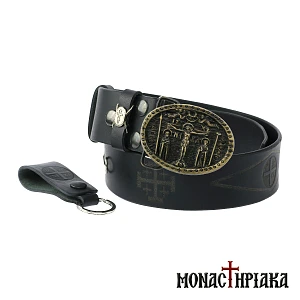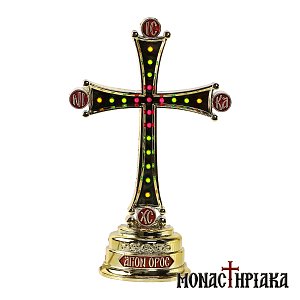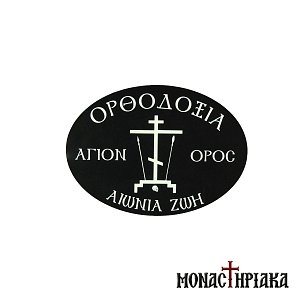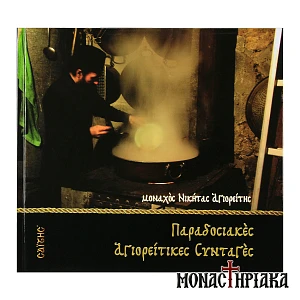The location of the Monastery of Dionysios and its hierarchical position
The Holy Monastery of Dionysios, also known as "Nea Petra" is built on a narrow and steep rock at a height of 80 meters from the sea, east of the Aeropotamos stream, between the monasteries of Saint Grigorios and Saint Pavlos.
The architectural structure of the Monastery is impressive and reminds of an ancient fortress. Looking at the Monastery from the south side it seems to be suspended between wooden bases, while on the west side there are steep ravines that come down from Mount Athos and favor the north winds.
The Holy Monastery of Dionysios is in the 5th place in the hierarchy of the Athonite Monasteries and celebrates on August 29, in memory of Saint John the Forerunner.
When was the Dionysiou Monastery founded and who is the founder?
The Dionysios Monastery was built in the 14th century and its founder was Saint Dionysios from Korysos in Kastoria. The construction of the monastery was a laborious process for Dionysios, as there were no financial resources and means for building.
In the effort of Dionysios, a great supporter and sponsor was Alexios III Komnenos, Emperor of Trebizond, motivated also by the Metropolitan of the city Theodosios, who was a fellow brother of Dionysios. Donations to the Monastery were later continued by the Emperors Palaiologos, as well as by many leaders of Moldavia. Saint Dionysios completed the construction of the Monastery in 1380 and gave it his name.

Important personalities at the Dionysios Monastery: Saint Niphon II, Patriarch of Constantinople and the monk Theoklitos Dionysiatis
Around the middle of the 15th century, the Patriarch of Constantinople and enlightener of the Romanians, Nifon (or Nephon), went to the Monastery of Dionysios, but without revealing his identity.
Nephon became a shepherd, but it soon became known that he was the former Patriarch. Crowds of monks flocked to his side to be taught by his words by the example of his humility and the adoring life he followed. Saint Nephon was laid to rest in the Monastery of Dionysios and his tomb is located near the cemetery of the Monastery, on the eastern side.
Near the Monastery of Dionysiou is also the Skete of the Holy Apostles, where the blessed monk Theoklitos Dionysiatis lived. The elder Charalambos Dionysiatis was abbot of the Monastery and was the most prolific athonite writer of the 20th century. He was laid to rest in 2001.
The Holy Monastery of Dionysios through the ages: a brief history
In 1389, the patriarch Antonios IV declared the Monastery Patriarchal and thus gave it an autonomous status.
At the beginning of the 16th century, the Moldavian Radoulos and his successor Neagos Vassaravas built the aqueduct and the tower of the monastery.
In 1539 a fire, perhaps the only one so powerful in the history of the Monastery, burned a large part of its buildings, but they were soon restored and renovated.
In the 16th and 18th centuries, the Monastery had great financial difficulties. At the beginning of the 19th century, it permanently returned to the commune system.

The Church of Holy Monastery of Dionysios
The Church of the Monastery is dedicated to the Genesis of the Saint John the Forerunner (June 24), and was built at the same time as the Monastery. However, the great fire destroyed it completely and the new Church was rebuilt in 1540.
The new Church was decorated with frescoes, which date from around 1546 and are attributed to the artist George of the Cretan school.
The gilded iconostasis and the frescoes of the Apocalypse are also considered notable works of art. In fact, the frescoes of the Apocalypse are the oldest complete pictorial expression of the Apocalypse in the Orthodox world.
Our Lady of the Salutations or Akathistos
The most important of the chapels located in the monastery's precincts is that of Panagia of Akathist. Inside this chapel is kept, on wax mastic, the ancient icon of Panagia of Akathist or Panagia of Greetings or Panagia Myrovlitissa.
This icon is one of the priceless treasures of the Monastery, as the Salutations to the Most Holy Theotokos (Akathist Hymn) was sung for the first time in Constantinople.
According to tradition, Patriarch Sergius held this image when he passed the walls of Constantinople and gave courage to the people and the army, during its siege by the Avars and Slavs in 626 AD.

The Cells and Kathismata of the Dionysios Monastery
The Monastery also has seven Cells and several Kathisma, as well as eight chapels and six chapels. The Dionysiou Monastery also owns the Monoxylitis metochi, which was given to it from the Great Lavra in the middle of the 17th century. The Dionysiou Monastery ranks fifth in the hierarchy of monasteries.
The relics and the Library of the Holy Monastery of Dionysios
Among the heirlooms of the Dionysios Monastery are many embroidered sacred vessels, gold-embroidered robes and relics of Saints. The most important relics are the right hand of the Saint John the Forerunner and the holy relics of Saint Nifon, in a silver and gold case.

The sacred relics of the Monastery include an iron piece from the chain that had bound the Apostle Peter, when he was imprisoned in Rome. In addition, the relief representation of the Crucifixion in ivory, a work which dates back to the 10th century, is also considered important.
The most important icon kept in the Dionysios Monastery is of the Virgin Mary of Akathist.
In the library of the Monastery are treasured 1,100 manuscripts, some of them illustrated, and over 15,000 books with valuable archetypes and antiquities.
Contact with Holy Monastery of Dionysios:
Phone: +30 2377 023687
Email: monidionysiou@gmail.com
